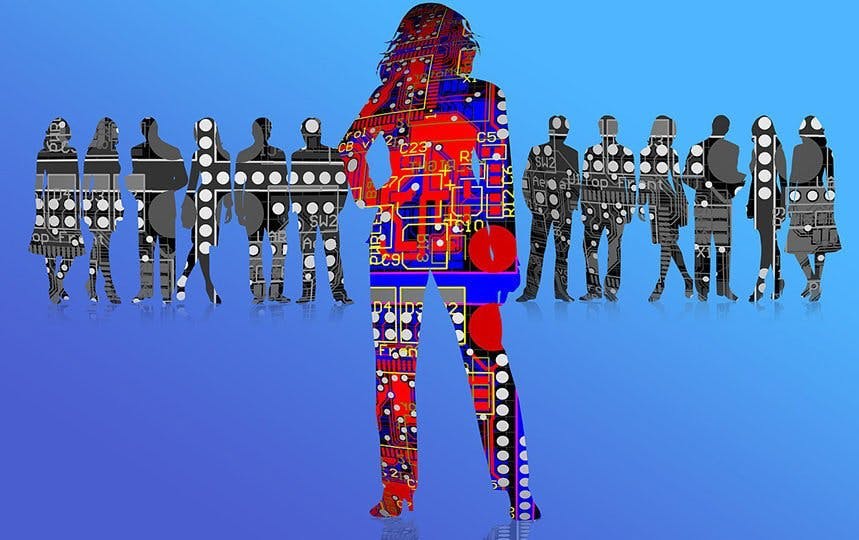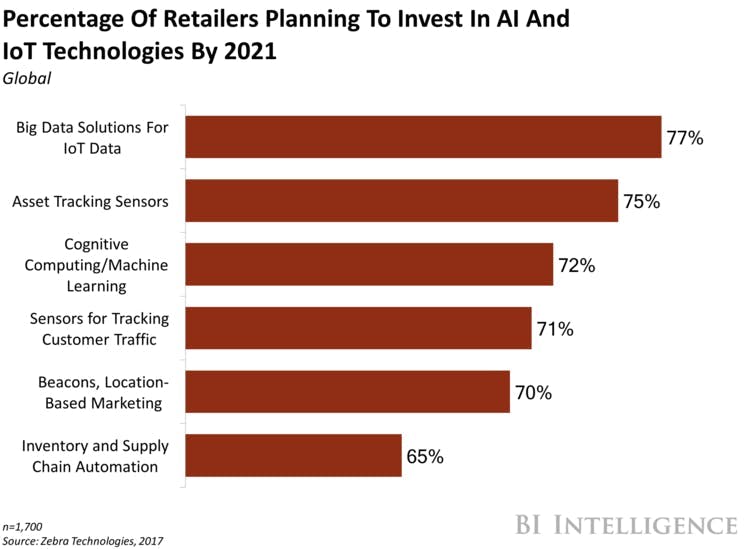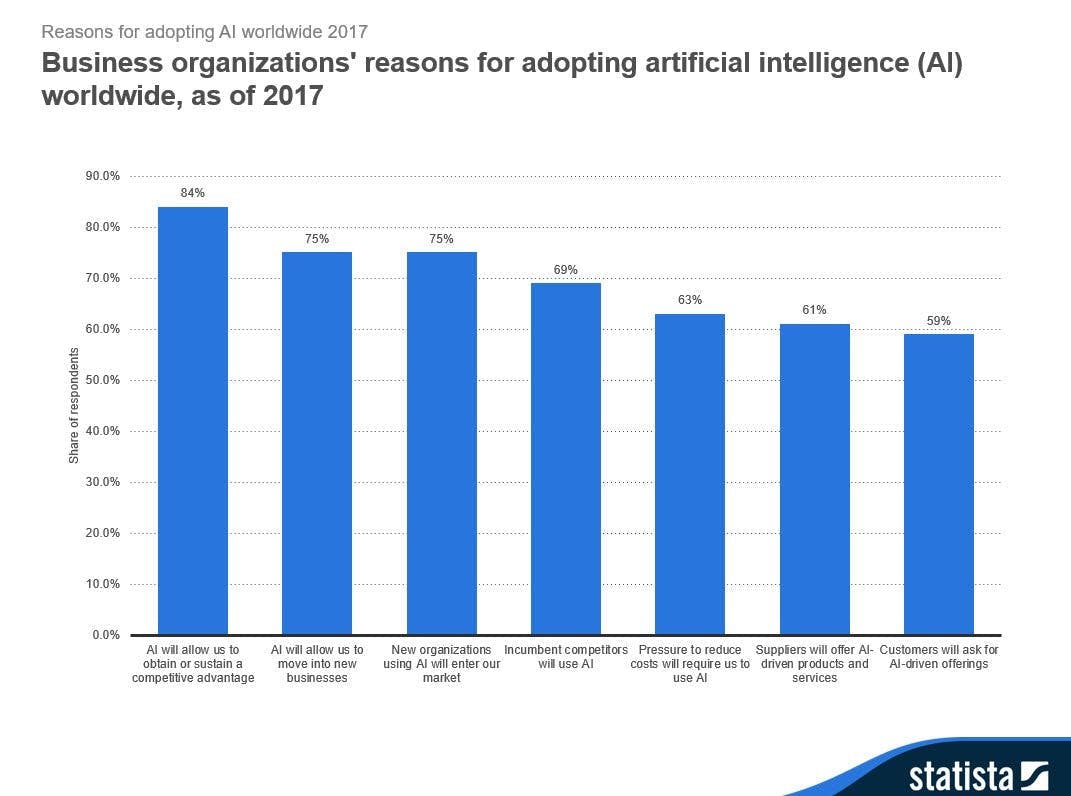
AI is a powerful tool that lets workers do the jobs they were hired for
Let AI finish the work while employees do the thinking
—
When artificial intelligence (AI) is mentioned in the media, it’s often a story about how machines are replacing humans. Even prominent minds like Stephen Hawking and Elon Musk warn of an AI apocalypse in which we’re dominated by robots.
Sci-fi aside, a 2018 study by Adobe found that 47 percent of digitally mature organizations have a defined AI strategy. Meanwhile, a survey from Price Waterhouse Coopers revealed that 72 percent of business leaders see AI as a business advantage.
Yes, there will be jobs replaced by robots. Yet, AI will also help optimise existing processes to free up time for human workers to perform higher-level functions. Thanks to AI ‘augmenting’ our thinking, humans will ultimately dedicate their time to more advanced business activities like creative considerations (i.e. business impact analysis across different scenarios), strategy development, formulating customer insights, critical thinking, etc. In fact, AI facilitates the creation of new, creative strategies never considered those of need. Let’s rewind to the 80’s…
Recall the game called Pong? In case you are unfamiliar with it, it’s one of the earliest arcade video games developed. Very simple. Basically, it is a table tennis sports game featuring simple, two-dimensional graphics. In the video below you can see that this Machine Learning model, Reinforcement learning model developed by Elon Musk’s own OpenAI to be exact, not only learns how to play the game but after several hours develops the no-lose creative move. It positions itself just below the fold off center and manages to hit every tennis ball coming its way.
Pong AI creative move from HIVERY on Vimeo.
See, the thing with AI is that it is good at achieving its goal. In this case – winning at Pong. But this same thinking approach can be applied in CPG/FMCG industries to address unwanted issues like stock-outs, robust manual intervention in planogram design, operational inefficiency, or even poor product assortment.
The reality of AI
The best way to illustrate how AI is transforming businesses is to show you. Check out this chart on how the businesses in FMCGs are investing in AI.

Although some of these functions will replace retail jobs like customer service, stock clerk, manager, sales assistant, security guard, or accountant, others will be created that will empower human employees to perform more strategic and creative tasks. With AI’s power, employees will have a greater impact on the company’s bottom line, allowing everyone to generate more revenue.
For example, when I worked in retail, we would come in once a week while the store was still closed to manually count every product on the shelf. That data was stored in spreadsheets and took a dozen employees several hours to gather and reconcile it. Despite the laborious process to gather this information, it was rarely leveraged for anything of use.
When using AI, inventory, asset tracking, and other sections of commercial management can be fully automated. Shrinkage is reduced, inventory is better optimized to increase sales, and employees on the sales floor are free to do what they were hired to do – help customers find the products they need. They can formulate a sales strategy, focus on customer insights, and improve marketing and category management.
And this is just one example from one industry – imagine how many menial tasks can be replaced across all industries. That’s the power of AI.

Enabling creative solutions in business
One of the biggest problems faced in business today is many of the highly skilled employees not spending their time performing the tasks they were actually hired to do. Your employees are currently spending way too much time executing menial, repetitive tasks which ultimately just stunts the growth of your business.
Say, you hired a controller with a CPA to manage your business’s accounting. The median salary for this position is $80,000, and it takes years of academic training and professional experience to obtain. Would you want this highly skilled and paid professional spending all their time filing and doing data entry instead of the high-level math he was hired for?
When this happens, the company ends up wasting money overpaying for entry-level tasks, and the employee becomes disillusioned with their job. According to the Sydney Morning Herald, the most common reasons employees become dissatisfied with their job is being bored, not using their skills, and being overwhelmed. New “species of thinking” help address this by opening up a world of creative insights and strategies.
AI alleviates these problems by taking on the burden of repetitive tasks. It even provides more insights than humans can when analyzing data. The bottom line is: AI doesn’t replace humans. Instead, it’s a powerful tool that augments our abilities, so we can get more done faster and focus on more important tasks that make a business thrive.
—-
Sources:
In the age of Artificial Intelligence, creativity will get an upgrade
AI set to encourage strategic skills at scale
How is augmenting human intelligence moving forward
Ellon Musk’s billion-dollar crusade to stop the AI apoalypse
Mobile maturity means more than just an app and website
15 mind-blowing stats about emerging technology
Types of job in retail
Controller: job description and average salary
CPA degree